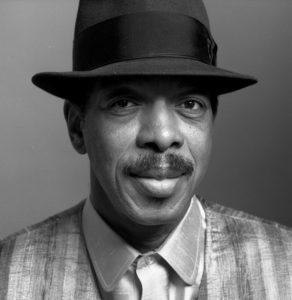
What is Jazz?
Jazz is an expressive and diverse genre of music that originated in the African-American communities of New Orleans. Jazz started in the Congo Square, which is where enslaved Africans and African Americans would come and express their shared love for music through music, dance, and song. The Congo Square combined ethnicities and helped African, French, Caribbean, Italian, German, Mexican, and American Indian, as well as English, descent interact with one another. Jazz is one big genre, but is broken into many sub genres that each brings its own uniqueness to jazz itself.
Thesis Statement
The female jazz artists brought different contributions to the evolution of jazz compared to men jazz artists, but both had essential values that helped the evolution of jazz.
Female & Male Jazz Artist
Nina Simone

Eunice Kathleen Waymon, was born on February 21st, 1933 in Tryon, North Carolina. She was well known as Nina Simone, a singer, songwriter, pianist, and civil rights activist. She was a prominent figure in various genres such as jazz, blues, classical, and R&B. Although we’re going to single in on her contributions to jazz today, Nina Simone has contributed to a variety of genres in the music industry.
Nina's contributions to Jazz
Nina Simone was highly skilled in piano, along with all of her other gifts. She was very talented and her piano skills added an intricate layer to her performance. Most of her performances she would play the piano and sing her own songs along with other instrument accompaniments. Simone’s vocal delivery was powerful and full of emotion. Nina was a passionate civil rights activist, most of her songs were about social justice and racial equality. Songs such as “Mississippi Goddam, and “To be young, gifted and black” became anthems for the Civil Rights Movement. This brought a uniqueness to her contribution to jazz because combining her activism with her music reached out to a lot of people and changed perspectives of her music. Simone also refused to confine to a single genre and challenged traditional expectations of many artists. Her defiance contributed to the evolution of jazz and encouraged musicians to experiment with new sounds and themes. Overall, Nina Simone’s fearless approach to her art, combined with her commitment to social justice, has left an incredible mark on the cultural and musical aspect of jazz.
Billie Holiday

Eleanora Fagan was born on April 7, 1915, in Philadelphia, Pennsylvania. Fagan became well known as Billie Holiday, an iconic American jazz and blues singer. She became a well renowned vocalist and regarded as one of the greatest jazz vocalists of all time. Throughout her musical career she has worked and cooperated with many influential jazz artists. She created such a brand for herself, and became a well known figure in jazz.
Billie's contributions to jazz
Billie Holiday has a unique and undeniable desist voice which was constructed of deep emotional quality, intimate phrasing and was wonderful with storytelling. Her ability to convey the audience into deep emotions through her singing was a part of her talent in the jazz world. Billie contributed an innovative approach to her interpretation of songs. Her renditions often involved rephrasing lyrics, altering melodies, and infusing her own emotional experiences into the music. This approach laid the framework for the expressive and personal nature of her jazz vocals. Holiday’s ability to convey a wide range of emotions in her singing made her performances deeply moving. Her emotionally charged songs such as “Strange Fruit” and “God Bless the Child” are considered some of her most powerful works in the history of jazz. Like stated previously, Holiday worked with some of the most notable jazz musicians of her time. Some of these artists include Lester Young, Count Basie, Benny Goodman, and so many more. These collaborations helped shape the evolution of jazz and contributed to the development of the swing jazz era. Billie was a symbol of resilience, overcoming personal struggles and racial adversity. Her impact on the civil rights movement and her enduring cultural legacy continue to be celebrated to this day.
Miles Davis

Miles Davis was born on May 26th 1926 in Alton, Illinois. He was known to later become an American jazz musician, trumpeter, bandleader, and composer. Davis was one of the most influential and innovative figures in the history of jazz, and his creations and contributions spanned over several decades. His role in jazz helped push boundaries of various jazz styles, and his contributions were endless.
Miles's Contribution to jazz
In the late 1940s to early 1950s, Davis was the key figure in the development of cool jazz. And then later in the year 1950s he was best known for his role in popularizing modal jazz (which is a form of jazz that focuses on musical modes and the use of chords) with his album “Kind of Blue” that was released in 1959. This album was one of the best-selling jazz albums of all time. Davis explored modal improvisation, with his ensemble moving away from traditional chord progression, this influenced countless musicians in his time. Davis consistently sought out new sounds and styles, adapting to and influencing the changing of different styles of jazz. He led several jazz groups throughout his career, and was known for assembling talented and groundbreaking musicians. Some of his collaborations include working with artists such as John Coltrane, Herbie Hancock, Bill Evans, and so much more. His collaborations led to the creation of some of the most celebrated jazz recordings in history. Miles was also known for his distinctive trumpet playing. His sound was characterized by lyrical and often a distinct tone. His use of innovative phrasing and harmonic choices helped set him apart from other jazz artists. Davis left an incredible mark on the history of jazz, and his influence extends far beyond just the jazz genre. His restless spirit, innovation, and commitment to pushing the boundaries of jazz, has made him a prominent figure in jazz history.
Ornette Coleman

Randolph Denard Ornette Coleman was born on March 9, 1930 in Fort Worth, Texas. He is known to be an American jazz composer and saxophonist, but plays various instruments such as the violin and the trumpet. He was a pioneer figure in the world of jazz, and was known for his innovative approach to improvisation and his role in the development of free jazz. His contributions to this era of jazz are distinctive and many in number.
Coleman's Contribution to jazz
Ornette Coleman is often considered to be one of the builders of free jazz, a genre that emerged in the late 1950s early 1960s. Free jazz broke away from traditional jazz confinements, including standard chord progressions and structured compositions. In free jazz, improvisation is more open ended, which allowed more freedom and allowed artists to be more expressive throughout their music. As a saxophonist, Coleman developed a unique and distinctive approach to playing his instrument. His style featured angular melodies, phrasing, and a raw and expressive sound. His playing style set him apart from his contemporaries. Throughout his career, Coleman collaborated with musicians from various genres, breaking down barriers between jazz and other musical forms. Coleman is well recognized for his album “The Shape of Jazz to Come” that was released in 1959. This album is often credited to be one of the pioneer works of the development of free jazz. Coleman and his quartet challenged traditional jazz structures by moving away from predetermined chord changes and traditional song forms. The album introduced a more open and freeform approach to improvisation and each musician got to have more freedom and explore beyond strict harmonic constraints of past jazz genres. In this album Coleman got to showcase his unique approach to melody and structure. Songs such as “Lonely Woman” and “Peace” on this album showcase this well. Coleman’s “The Shape of Jazz to Come” remains a pivotal album that marked a turning point in the evolution of jazz and helped develop free jazz. Coleman’s contributions with this specific album alone was prominent throughout the history of jazz.
Ornette Coleman's Discography
1958: Something Else!!!! (Contemporary, 1958)
1959: Tomorrow Is the Question! (Contemporary, 1959)
1959: The Shape of Jazz to Come (Atlantic, 1959)
1959: Change of the Century (Atlantic, 1960)
1961: This Is Our Music (Atlantic, 1961)
1960: Free Jazz (Atlantic, 1961)
1961: Ornette! (Atlantic, 1962)
1961: Ornette on Tenor (Atlantic, 1962)
1965: Chappaqua Suite (Columbia, 1966)
1966: The Empty Foxhole (Blue Note, 1966)
1968: New York Is Now! (Blue Note, 1968)
1968: Love Call (Blue Note, 1971)
1971: Science Fiction (Columbia, 1972)
1972: Skies of America (Columbia, 1972)
1973-75: Dancing in Your Head (A&M, 1977)
1977: Soapsuds, Soapsuds (Artists House, 1977)
1976: Body Meta (Artists House, 1978)
1979: Of Human Feelings (Antilles, 1982)
1985: Song X (Geffen, 1986)
1987: In All Languages (Caravan of Dreams, 1987)
1988: Virgin Beauty (Portrait, 1988)
1992: Naked Lunch with Howard Shore, The London Philharmonic Orchestra (Milan, 1992) – soundtrack
1995: Tone Dialing (Harmolodic/Verve, 1995)
1996: Sound Museum: Hidden Man (Harmolodic/Verve, 1996)
1996: Sound Museum: Three Women (Harmolodic/Verve, 1996)
2009: New Vocabulary (System Dialing, 2014)

